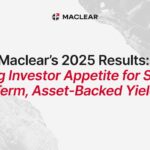Investing can offer the promise of financial growth and security. However, it’s crucial to tread carefully, especially when markets seem euphoric. One of the biggest risks in investing is getting caught in a bubble. Hence, in this piece, we’ll explore the intricacies of how to spot a bubble and dodge an investment bullet.
What is a bubble?
Bubbles occur when asset prices soar to unsustainable levels, driven more by speculation and hype than by underlying fundamentals. Spotting a bubble before it bursts can save investors from significant losses.
In the following, we’ll explore some of the key signs to watch out for that indicate a potentially overvalued investment.
Excessive price growth
The first and most obvious sign of a bubble is rapid and unsustainable price growth. When asset prices skyrocket over a short period, it’s essential to question whether the increase is justified by underlying factors such as earnings growth, demand, or innovation. If the price surge seems disconnected from reality, it could be a red flag.
Irrational exuberance
Irrational exuberance refers to an overly optimistic sentiment among investors, leading them to ignore risks and bid up prices beyond reasonable levels. Signs of irrational exuberance include widespread belief in this time it’s different narratives, excessive media hype, and a frenzy of buying without regard for valuation metrics.
Valuation Metrics
Valuation metrics such as price-to-earnings (P/E) ratio, price-to-sales (P/S) ratio, and price-to-book (P/B) ratio provide insight into an overvalued asset. Historically high ratios compared to historical averages or industry peers suggest that the asset may be in bubble territory. Here’s a quick checklist to assess valuation:
- High P/E ratio: A high price-to-earnings ratio indicates that investors are willing to pay more for each unit of earnings, suggesting overvaluation;
- Elevated P/S ratio: A high price-to-sales ratio implies that investors are paying a premium for each dollar of revenue generated by the company;
- Excessive P/B ratio: An elevated price-to-book ratio suggests that the market is valuing the company far above its tangible assets, indicating potential overvaluation.
| Metric | Current value | Historical average | Industry average |
| P/E ratio | 30 | 20 | 25 |
| P/S ratio | 5 | 3 | 4 |
| P/B ratio | 4 | 2 | 3 |
Speculative behavior
Speculative behavior, characterized by investors chasing quick profits rather than investing based on fundamentals, is a hallmark of a bubble. Signs of speculative behavior include:
- Day trading surge: A surge in day trading activity, often fueled by retail investors looking to make quick profits, can indicate a speculative frenzy;
- Proliferation of penny stocks: A proliferation of penny stocks or small-cap companies with little to no fundamental justification for their valuations suggests speculative activity;
- Initial coin offerings (ICOs): In the cryptocurrency space, a surge in ICOs (initial coin offerings) with little regulatory oversight and questionable business models can indicate speculative excess.
Media mania
Media coverage can amplify both positive and negative sentiment around an investment. During a bubble, media outlets often contribute to the hype by highlighting success stories and downplaying risks. Pay attention to headlines and news articles that tout unrealistic growth projections or dismiss concerns about valuation.
Herd mentality
Herd mentality refers to the tendency of investors to follow the crowd rather than making independent decisions based on research and analysis. In a bubble, herd mentality can lead to a self-reinforcing cycle of buying as investors fear missing out on potential gains. Be wary of investments that seem to be driven solely by FOMO (fear of missing out) rather than rational analysis.
Regulatory scrutiny
Regulatory scrutiny can serve as a warning sign that an investment or market is overheated. Increased regulatory attention may signal concerns about fraud, market manipulation, or systemic risk. Keep an eye on regulatory actions, enforcement actions, and statements from regulatory agencies such as the Securities and Exchange Commission (SEC) or the Financial Conduct Authority (FCA).
How to spot a bubble in stock market?
Spotting a bubble requires a combination of vigilance, skepticism, and analysis. By keeping an eye out for signs of excessive price growth, irrational exuberance, inflated valuation metrics, speculative behavior, media mania, herd mentality, and regulatory scrutiny, investors can better protect themselves from the pitfalls of investing in overvalued assets.
Remember, while bubbles can be tempting to ride on the way up, they often end in painful losses when they inevitably burst. So, stay cautious, stay informed, and always invest with a long-term perspective in mind.
Disclaimer: The content on this site should not be considered investment advice. Investing is speculative. When investing, your capital is at risk.




